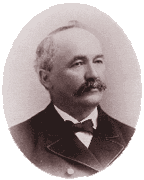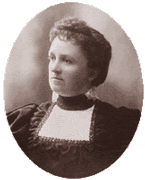


The Castle was completed in 1892 as the home of Charles and Kate Eisenbeis. Mr. Eisenbeis was a prominent member of the early Port Townsend business community. His business interests were diverse, including a bakery, brick works, lumber mill, brewery, bank and a hotel. In 1878, when Port Townsend became the first incorporated city in Jefferson County, its citizens elected Eisenbeis as the first mayor.
About Manresa Castle
In keeping with his status in the community, Eisenbeis built what was the largest private residence ever built in Port Townsend, consisting of 30 rooms. Locals referred to the building as the "Eisenbeis Castle;" its design was reminiscent of some of the castles in Eisenbeis' native Prussia.
The walls were 12 inches thick, made with bricks from Eisenbeis' own brick works, and the roof was slate. Tiled fireplaces and finely crafted woodwork were installed by German artisans.
Charles died in 1902 and Kate remarried a few years later. The Castle was left empty for almost 20 years except for a caretaker.
In 1925, a Seattle attorney bought the Castle as a vacation place for nuns teaching in Seattle schools. This plan did not work out well, and in 1927 the Jesuit priests purchased the building for use as a training college. The priests spent their sixteenth and final year of training here studying ascetic theology.
In 1928, the Jesuits added a large wing housing a chapel and sleeping rooms. They also installed the elevator (an Otis) at a cost of $3,400 -- a substantial sum in those days. When their addition was complete, the Jesuits stuccoed over the bricks of the original portion to give the building a more uniform look. They named the complex "Manresa Hall" after the town in Spain where Ignatius Loyola founded the order.
The Jesuits left in 1968 and the building was converted into a hotel. The elements "Manresa" and "Castle" were taken from the two previous owners to create the current name. The three different owners since 1968 have all done their part to lovingly renovate the building to modern standards while maintaining its Victorian elegance. For example, there were only 3 bathrooms when the Jesuits left - today there are 43.
